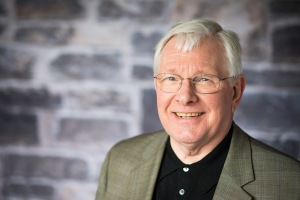
Part of my interest in psychoanalysis is that it sometimes leads me to places I had never guessed could be. When people I encounter learn I’m a psychoanalyst they usually associate psychoanalysis with psychological treatment, and for that reason often ask me what the difference is between what I as an analyst do as opposed to what a psychiatrist or psychologist or a social worker does. And, of course, it is understandable that they do, since psychoanalytic theory serves as the foundational conceptual basis for a variety of treatment approaches, viz., the “talking cure.”
But, as Freud noted, psychoanalysis is the sort of thing that, if you give it your hand, it will take your arm. Thus, Freud himself is said to have been less interested in psychoanalysis as a treatment method than as an approach to research into the human mind. Even in his early years when he was deeply immersed in his clinical work, studying the meaning and operation of the neuroses his patients brought to him, he was even more deeply immersed in the challenge of mapping out the basic systems and relationships of the constituents of the brain (and mind?) itself, a plan which ultimately he abandoned but which can be found in his works as A Project for a Scientific Psychology, and which many brain researchers today still recognize as the best working model of the mind currently available.
For my summer reading I took up Richard Rhodes’ The Making of the Atomic Bomb, and along the way I was reminded of how it is that we as psychoanalysts are in fact dealing with things which sometimes take us far from the immediate facts of transference and countertransference, resistance and repetition, and into other realms which are deeper and more puzzling than we usually are prepared for.
In his book Rhodes describes the struggles Niels Bohr encountered while working to understand certain experimental observations related to his study of the structure of the atom, struggles which would eventuate in quantum theory. In essence, his solution to his problems rested on accepting that certain phenomena in nature in fact are discontinuous, and that therefore relations between those phenomena can not be accounted for according to the strict rules of cause and effect. Prediction now becomes merely a matter of statistics, i.e., possibilities, not a purely linear process of reasoning. His conclusions essentially rested, depended on, a paradox that could not be resolved.
Bohr’s theory was totally unacceptable to some–anathema, if not heresy. Even the great Einstein could not follow Bohr, insisting that “quantum mechanics demands serious attention. But an inner voice tells me that this is not the true Jacob. The theory accomplishes a lot, but it does not bring us closer to the secrets of the Old One. In any case, I am convinced that He does not play dice.”
On the other hand, Leon Rosenfeld observed that “the idealized concepts we use in science must ultimately derive from common experiences of daily life which can not themselves be further analysed; therefore, whenever any two such idealizations turn out to be incompatible, this can only mean that some mutual limitation is imposed upon their validity.”
Thus it is that paradox and ambiguity and doubt become enshrined in the very warp and woof of being. And, what’s more, I suggest, psychoanalysts deal with an analogous phenomenon in their daily work. I am referring to the basic incompatibility, the “mutual limitation,” between our mental representations (think “idealized concepts”) of subject and object, or, between narcissism and object-relatedness.
As children grow from total dependence to mature adulthood, from a state in which their ability to distinguish what is subjective (inside) from what is objective (outside), to a state of (more or less) objectivity, the presumption is that they see the world and all the problems the world presents them in more cognitive and rational, less self-centered, ways. And yet, narcissism is never completely abandoned, nor is objectivity ever fully realized. There they exist, side by side, somewhere inside us, each vying for dominance. And the struggle is never fully decided.
Achieving attunement to these powerful factors in each individual patient, and understanding how to account for the varying strength and activity of each, makes up much of the analyst’s daily work. Our acceptance of this truth is indirectly acknowledged in our assumption that every analyst has submitted to a personal analysis, and that they continue to pursue their analysis throughout their life.
How have I come to have such temerity as to suggest that this conflict between narcissism and object-relatedness can be viewed as one of the basic irreconcilables of life in its human form, and thus perhaps as an analogue to the irreconcilables found on the quantum level in the basic matter of the universe (at least as we are able to know it)? Besides my own thoughts and suppositions, I take recourse in the British psychoanalyst Donald Winnicott’s caution that one never confronts children in their play in the transitional space with the challenge “Did you make this, or did you find it?” and in his further comment that even in later life one is never free of the burden of the work of discriminating what is real from what is imagined, what is inside, and what is outside. Or, as I remember reading somewhere else, “Always inside, sometimes outside.” Thus, I would add, not only is the work never done, but our conclusions must therefore always be at best uncertain and provisional.
–Dr. Thomas Twyman, Cert. Psya.